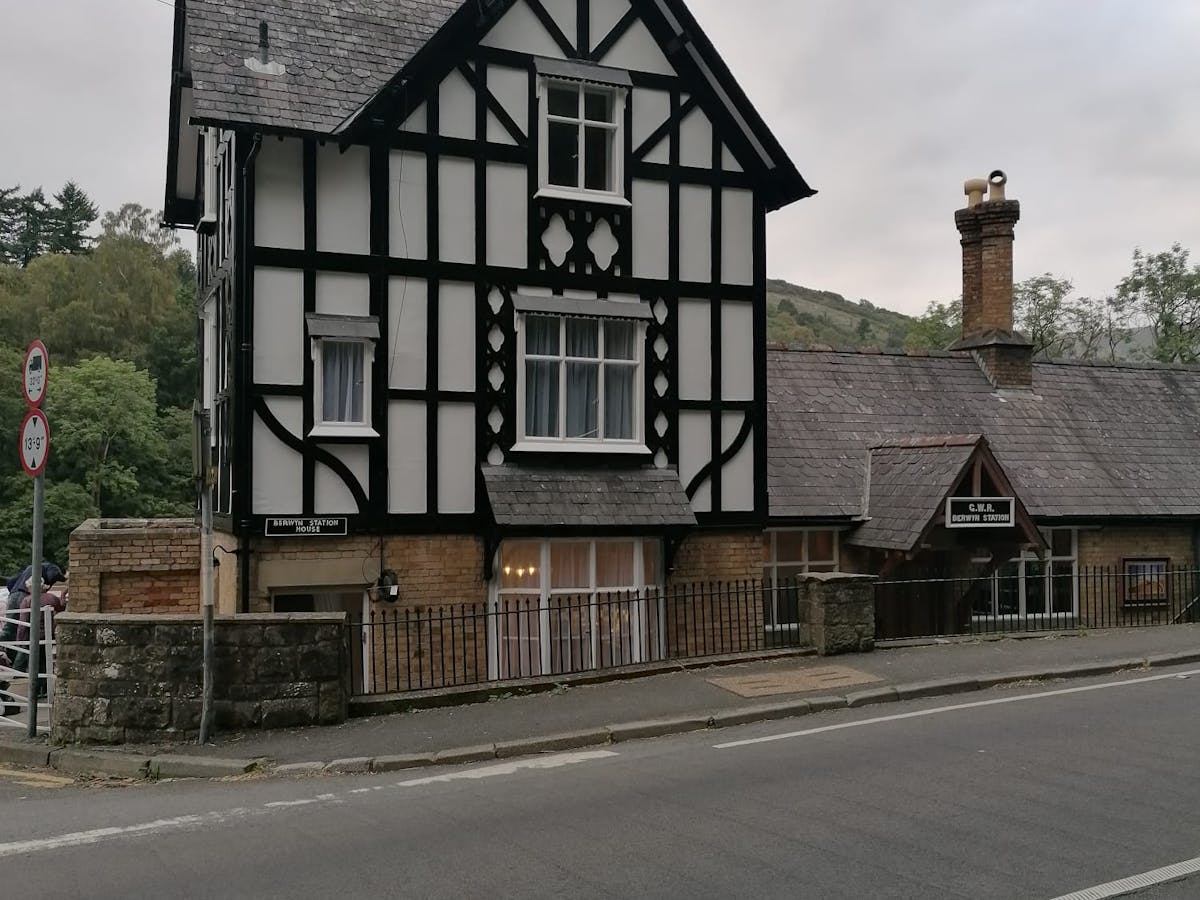Berwyn Stationmaster’s House
Come and stay in our beautifully renovated Grade II listed Stationmaster’s House, located right on the platform of a working railway station at Berwyn Station, situated on a ledge above the gorge of the River Dee in beautiful North Wales.
Guests of this unique property receive a voucher for one day’s free travel on the railway. (Travel passes are not valid on the Santa Special event or any evening events – tickets for these must be purchased separately).
Accommodation comprises of three floors and sleeps up to six people.
Further booking information will follow.
GROUND FLOOR
- Kitchen/Dining
- First Bedroom – Twin Bedroom
- Bathroom
FIRST FLOOR
- Lounge with bay window which offers stunning views over the railway line and River Dee.
- Second Bedroom – Twin Bedroom
- Shower Room
SECOND FLOOR
- Master Bedroom – Double bed and ensuite Toilet with wash hand-basin
Facilities: Electric woodburner in living room inc. Gas CH, bed linen and
towels inc. T/cot. H/chair. Freeview TV (basic package). DVD. M/wave.
W/machine. D/washer. Wi-fi. Station platform with seating. Parking.
No smoking.
NB: Steep drops from station platform.
Although we do have wifi, due to the location of the Stationmaster’s House access to this can’t be guaranteed.
Berwyn Station – Historical Background
The Station in the Gorge
Berwyn station opened in May 1865 when a new railway line was built between the Welsh towns of Llangollen and Corwen. From the outset, it was part of the wider Great Western Railway (GWR) network and located on an important cross-country route between Ruabon and Barmouth.
Today the station is located within a wooded gorge with only a handful of houses and a riverside hotel nearby. Back in the Victorian era, it was surrounded by a vibrant community including a post office and Methodist chapel. However it was the local gentry that was the main reason for the station’s existence. The Chairman of the Llangollen & Corwen Railway lived just up the road at Plas Berwyn and in an agreement from 1861 it was announced that:
“A station to be called The Berwyn Station shall be built in ornamental style and contain a first class waiting room in addition to the general waiting room. All passenger trains shall stop at Berwyn if and when required by the owner or occupier of, or visitors to, Plas Berwyn mansion”.
Berwyn Station – Building
The central part of Berwyn station comprises the General Waiting Room, with an adjoining Booking Office. The elaborate lamps on the interior walls recall a time when the station was lit by oil and paraffin only; the station being too remote for gas pipes to be installed to it.
Tickets Please!
The term booking office – which is still used today – is adopted from the old coaching practice of issuing tickets from a book. Originally these tickets on the early railways were handwritten and the process was very laborious. In 1837 a stationmaster and trained cabinet maker named Thomas Edmondson introduced the Edmondson railway ticket. These pre-printed tickets were all individually numbers and date-stamped by a machine upon issue. Special souvenir Edmondson tickets are still issued to passengers from Berwyn’s booking office in the traditional way.
First Class Waiting Room
The station’s tea room is now located within the former First Class Waiting Room. During the Victorian period, the station boasted a separate waiting room for the men and women travelling first class. The room had comfortable seats and a roaring fire in winter, whilst those in the General Waiting room would have had to settle for bench seats.
The Role of the Station Master
From 1865 until the mid-1950s, the station master was the key authority figure at Berwyn railway station. The station master was a well-respected figure with significant social standing in the local community. His role would have included selling tickets, handling parcels, tending to the station’s coal fires and making sure all passengers were safe. In his spare time, the station master also looked after the station’s floral and vegetable gardens.
Milk
The railways created a regular supply of fresh milk from the countryside. The milk was transported in tall conical metal churns, being taken by a delivery cart from the local farms to the nearest railway station. The churns, generally with a capacity of seventeen gallons, were very heavy. Handles enabled two men to lift one when necessary, but more commonly they were rolled along on their bottom rims by one man, making a distinctive rattling noise. Two milk churns would arrive at Berwyn every day from the nearby Llantysilio Farm for transporting on to the Corwen Creamery.
Station Master’s House
This is the mock-Tudor part of the station building, which is where Berwyn’s station master and his family would have lived. Although the house came with the job, the Station Master still had to pay rent to the GWR; in 1924 this would have cost him 7 shillings and sixpence a week.










